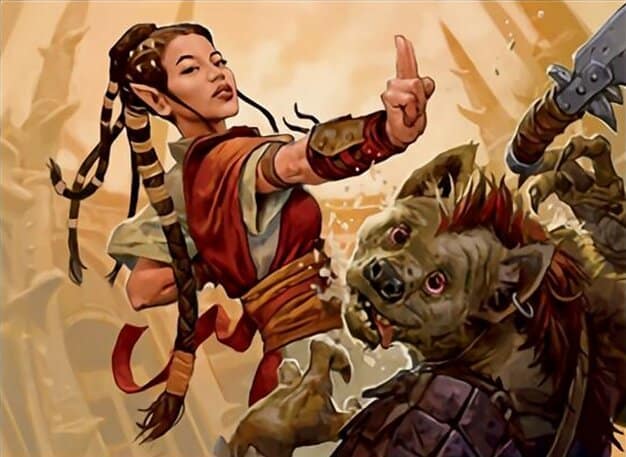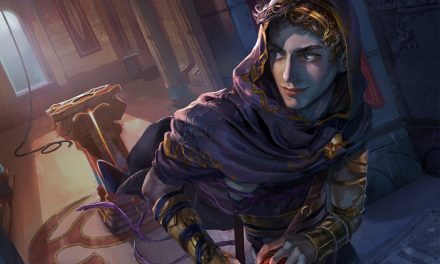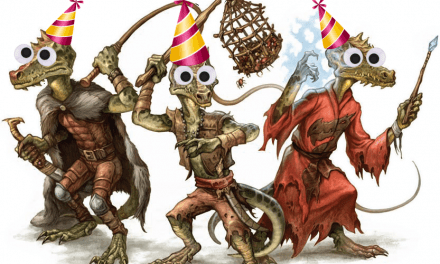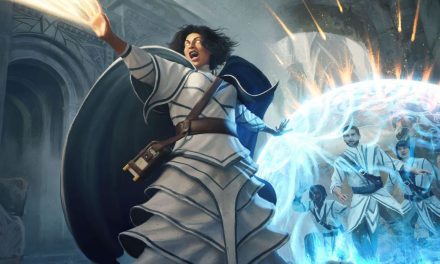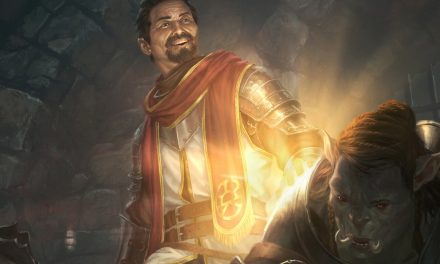With equal parts unpredictability, comedy, and lethality, the Way of the Drunken Master Monk is a combatant like no other.
It can be easy to underestimate Monks of this Monastic Tradition. After all, just look at them! They can barely even stand up, right?
Uhh… right?
In the blink of an eye, the enemy is unconscious on the floor while the Monk pours themselves another drink.
So let’s raise a glass with this full guide to the Drunken Master Monk in D&D 5e!
What is the Drunken Master Monk in D&D 5e?
By mimicking the staggering and unpredictable movements of a drunkard, these Monks keep enemies guessing in combat. They have a knack for infuriating enemies with their antics all the while carefully keeping control
Contrary to this Monastic Tradition’s name, Drunken Master Monks don’t necessarily have to drink.
Disguising their athletic prowess as drunken swaying and tumbling, the Drunken Master is able to unleash barrages of attacks while moving effortlessly across the battlefield.
Not only can they avoid enemy attacks, but they can even make their enemies attack each other in the confusion!
While most Monks may be famous for their stern and disciplined personalities, the Drunken Master Monk is instead a chaotic whirlwind. Just like such a force of nature, you simply can’t help but stare in awe at what it’s capable of.
The Way of the Drunken Master is one of three Monk subclasses released in Xanathar’s Guide to Everything.
Role in the Party
Like all Monks, the Drunken Master Monk is primarily a melee striker. They’ll want to be right there on the party’s frontlines in combat.
But this is ultimately a very defensive Monastic Tradition. Your damage output isn’t necessarily going to stack up to the other Monk subclass options.
But that’s okay and is certainly no reason to discount the Way of the Drunken Master as just a gimmick! Just like the Drunken Master themselves, there’s more here than initially meets the eye!
Drunken Masters are especially suited to a skirmishing “hit and run” type of playstyle. They’re able to quickly close in on an enemy, unleash their Flurry of Blows, and safely move away. If they don’t drop the enemy, they might be able to get them angry enough to chase after them!
Get enough enemies distracted by your drunken antics, combine that with the Monk’s high Dexterity score and you’ve got a character that’s great at suckering enemies into making tactical mistakes.
Don’t underestimate this subclass’s defensive capabilities. You’re more of a tank than anyone might guess!
Yet even more clever deception from the Drunken Master!
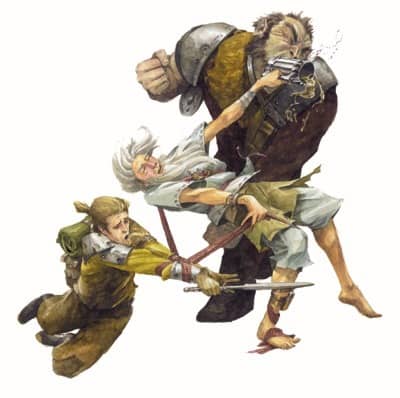
Drunken Master Monk Features 5e
So let’s look over the Drunken Master Monk’s features to see how this all comes together.
You’ll notice that this subclass is especially good at the lower levels. Considering that the low levels can be pretty brutal for most Monk characters, this makes the Way of the Drunken Master (and the survivability that it offers) even more enticing!
Also Check Out: The Full Monk Class Guide for D&D 5e!
Bonus Proficiencies (Level 3)
When you take the Way of the Drunken Master as your Monastic Tradition at level 3, you immediately get two subclass features.
We kick things off with some bonus proficiencies that add extra flavor to the Drunken Master Monk.
Specifically, you gain proficiency in the Performance (Charisma) skill as well as Brewer’s Supplies.
Performance makes sense considering that the Drunken Master relies heavily on others believing that they are too impaired to actually fight. Realistically, this blurs the line between Performance and Deception though.
Of course, you’re also able to put on a more traditional show if you’d like. The Drunken Master mixes comedy with grace and acrobatics in a way that might get a crowd to take an interest.
I could especially see the Drunken Master’s performances involving bar-themed feats like balancing stacked ale glasses on one’s head or (if you can get behind the bar) reenacting a scene from the movie Cocktail!
All in all, how much use you’ll get out of these proficiencies depends on what type of group you’re in.
If the group enjoys lots of roleplaying interactions with the NPCs in town, you are in a great position to put on some shows or maybe even sell your own craft beer to some local taverns. Otherwise, these features don’t really matter much.
But not to worry, you’ve got another new feature at level 3 as well!
Drunken Technique (Level 3)
Your second level 3 feature from the Way of the Drunken Master Monk is a major part of how this subclass plays.
Drunken Technique adds two extra bonuses to the Monk’s Flurry of Blows ability:
- You gain the benefit of the Disengage action.
- Your speed increases by 10 feet until the end of the current turn.
Flurry of Blows is a key part of any Monk’s kit. It’s the ability that most Monks will be spending their ki points to use so that they can unleash two more attacks on their turn. At level 5, this has you potentially smacking the enemy four times!
By adding the benefit of Disengage to your Flurry of Blows, you’re able to smack the enemy around and then safely relocate without having to worry about an attack of opportunity. You’ll also be able to move an extra 10 feet!
This could be useful for helping you put some pressure on another enemy but could also help you safely retreat if you find yourself getting overwhelmed by enemies.
Just make sure that you use your Flurry of Blows before you need to move to get the full benefit from your Drunken Technique.
Remember: your goal is to distract enemies and soften them up so the rest of your party can safely close in and finish them off!
Tipsy Sway (Level 6)
At level 6, the Drunken Master Monk gains the Tipsy Sway feature.
This feature gives you two unique benefits that will also be very important as you continue on your adventure!
Leap to Your Feet
The first benefit you gain from the Tipsy Sway feature is Leap to Your Feet. This helps you remain nimble in a situation that could be much more dangerous for others!
When you’re prone, you can stand up by spending 5 feet of movement rather than spending half of your speed.
Getting knocked prone can be pretty rough for anyone.
To get up, you typically have to spend half of your movement speed which can really mess up your turn. If you don’t get up quickly, enemies can dogpile you and will have advantage on their melee attacks against you!
Monks especially rely on having a ton of mobility, so the Drunken Master’s ability to get back up quickly with only 5 feet of movement is very useful in these situations!
Hopefully, you’re not getting knocked prone with any regularity. But in situations where you do, you’ll be glad you have this feature!
You Might Also Like: Monk Weapons in D&D 5e
Redirect Attack
The main benefit you gain from Tipsy Sway is the ability to redirect an enemy’s attack. In true Drunken Master fashion, you are able to create even more chaos amongst your enemies by making their attacks hit each other!
When a creature misses you with a melee attack roll, you can spend 1 ki point as a reaction to cause that attack to hit one creature of your choice, other than the attacker, that you can see within 5 feet of you.
This benefit is flavorful, funny, and incredibly powerful in the right situation.
A staple of good encounter design is to have the big enemy fighting alongside several smaller enemies. For example, maybe a group of hobgoblins has a cyclops on their side as a type of heavy-hitting siege weapon.
Your ideal play is to keep the heaviest hitter focused on you. If you’re able to successfully dodge their attack, you can easily turn that against the smaller enemies by spending your reaction and a ki point.
Now the hobgoblins are getting scared as they see you baiting their cyclops to smash the wrong combatants.
As with all things that involve your ki points, the trick here is balance. To use this feature, you’re spending a ki point as well as your reaction (which means you won’t be taking any attacks of opportunity).
You have to determine if you think redirecting an enemy’s attack for a guaranteed hit will do more damage than spending that same ki point to unleash two extra attacks with your Flurry of Blows.
Also, note that this is a guaranteed hit which means it can also be a good way of dealing with enemies who have a high Armor Class!
Drunkard’s Luck (Level 11)
At level 11 you notice that things just seem to work out for you more often these days.
When you make an ability check, an attack roll, or a saving throw and have disadvantage, you can spend 2 ki points to cancel the disadvantage for that roll.
This may seem like a small feature, but it can very easily make the difference between life and death.
Generally speaking, you’re going to want to use this for saving throws or ability checks.
Monks rely on making a bunch of small attacks against enemies in combat, so spending 2 ki points to remove disadvantage from only one of those attacks will rarely be a good idea.
If you’re sure that one hit is all it will take to drop that last enemy, it might be worth it. Otherwise, don’t bother.
Negating disadvantage on an ability check can be worth it on occasion.
If failing the check is likely to have some dire consequences, it’s totally worth it to spend the ki points. If the consequences for failing aren’t likely to cause any real harm, then you might as well save the ki points.
But your Saving Throws are what benefit the most from this ability.
Things like traps or spell effects that require you to make a save are often pretty severe (especially by the time you’ve gained this feature!) Having to make those saves with disadvantage could very easily be a death sentence for a character.
2 ki points is a small price to pay in these situations!
As a reminder, advantage and disadvantage don’t stack so Drunkard’s Luck negates the disadvantage regardless of how many sources of disadvantage there are!
You can check out my article explaining advantage and disadvantage to learn more!
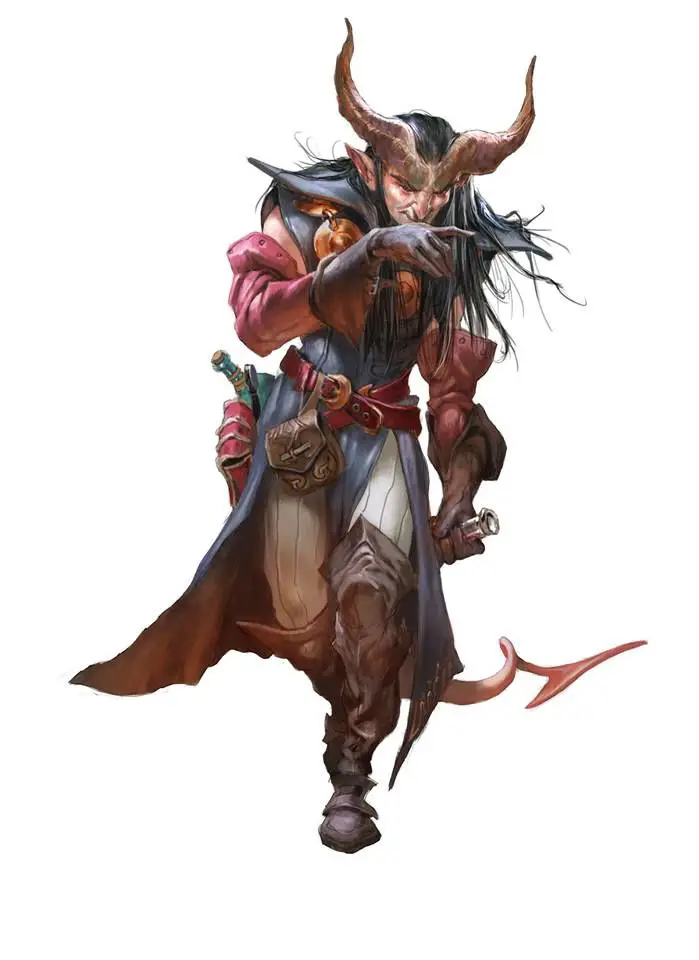
Intoxicated Frenzy (Level 17)
At level 17 we come to the Drunken Master Monk’s capstone ability: Intoxicated Frenzy.
When you use your Flurry of Blows, you can make up to three additional attacks with it (up to a total of five Flurry of Blows attacks), provided that each Flurry of Blows attack targets a different creature this turn.
In keeping with the Drunken Master’s role as a type of aggro-magnet, this works best if you are surrounded by enemies.
On the surface, the fact that you have to be surrounded by enemies and THEN spread the attacks from your Flurry of Blows around might make this seem kind of “meh” at best. But don’t dismiss this so quickly!
Combining Intoxicated Frenzy with your Drunken Technique feature results in a powerful (and honestly kind of hilarious) tactic.
You have an extra 25 feet of movement when you gain Intoxicated Frenzy at level 17. From level 18 on, that turns into 30 feet of movement. Triggering the benefits of Drunken Technique with your Flurry of Blows, you gain ANOTHER 10 feet of movement as well as the benefit of the Disengage action.
So you can make two attacks with your Attack action then spend a ki point to use Flurry of Blows and gain up to five attacks with that. While the enemies are trying to figure out what just happened, you’ve successfully disengaged and moved well away.
This can be used to quickly get out of a very bad situation but can also be useful for baiting enemies around the battlefield.
With so much movement and the safety from your Drunken Technique, you don’t necessarily even need to be surrounded to use Intoxicated Frenzy. You’re perfectly capable of hitting enemies with your Flurry of Blows as you drunkenly stagger past them.
A Note about Intoxicated Frenzy’s Damage
As for the damage output, you’re spreading the love around but can still focus some of that damage on a particular enemy.
While each of the Flurry of Blows attacks (up to five) will need to be against a different enemy, you still have your two regular attacks as well.
It’s not a bad idea to hit one enemy with both of your regular attacks plus one of the Flurry of Blows strikes. This lets you still dish out damage with Intoxicated Frenzy without worrying about spreading your damage around too much.
Recommended: Mastering the Monk’s Stunning Strike in D&D 5e
Connections
The Way of the Drunken Master can connect to a story or party just as well as any Monk. There are no real limitations as to why you have joined up with the party or what your character’s goals are.
Considering how chaotic the Way of the Drunken Master is compared to more orderly Monastic Traditions like the Way of the Open Hand, there’s some space to go beyond a more traditional Monk backstory here.
Personally, I don’t fully envision a monastery that “properly” teaches the Way of the Drunken Master.
To me, it seems a little counter-intuitive considering that most monasteries teach mastery of the mind and body through strict discipline and training. That doesn’t fully vibe with the typical Drunken Master.
Instead, I like to think of existing Drunken Masters as wanderers who prefer to march to the beat of their own drum. In doing so, they mix the martial arts training of monasteries with a more “practical” tactic of playing the fool to catch attackers off-guard.
If you were to take that route, you might have studied or apprenticed under just such a person. You might have even found this person as a result of leaving your monastery (whether by choice or otherwise.)
Of course, this might just be a tactic that your character has simply developed on their own.
Regardless, it’s up to you if your character is actually drinking or not. The point of the Drunken Master is less about actually getting hammered and more about making attackers think that you’re less of a threat than you actually are.
You Call This A Drink?
Funny enough, Monks actually become immune to poison and disease at level 10 with their Purity of Body feature. Considering that alcohol is a poison, this technically means that a Monk can no longer get drunk once they hit level 10.
If you’ve decided to make a Drunken Master who is always drinking and not simply pretending to be drunk, that creates a bit of a problem!
In that case, you might be able to do a bit of re-flavoring.
The Drunken Master’s choice of beverage is so strong that they’ve somehow developed an incredible immune system. Even the most powerful poisons pale in comparison to the many years the Drunken Master has spent drinking such a potent beverage.
This also opens up some potentially fun roleplaying scenarios in which the Drunken Master is able to completely dominate a drinking game at a tavern.
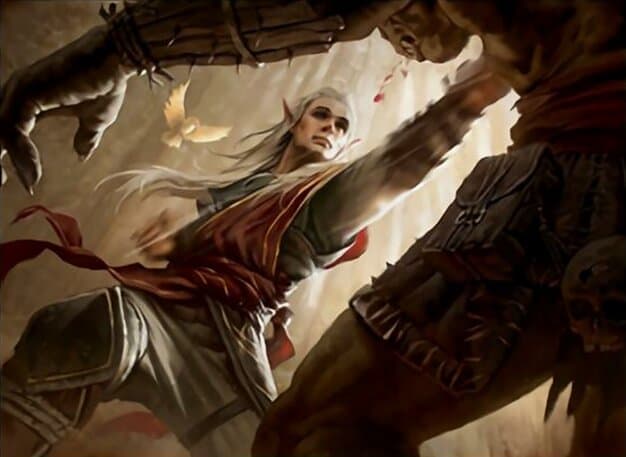
Is the Drunken Master Monk Good?
Personally, I’m a huge fan of the Drunken Master Monk in 5e. They’re entertaining and engaging to play while also being great at grabbing enemies’ attention and functioning as an unconventional tank for the party.
Mixing the Monk class’s signature mobility with the benefit offered by Drunken Technique is something that should not be overlooked. You’re able to effortlessly move around the battlefield without repercussions to become an unbearable nuisance to your enemies.
That said, there’s not really any kind of “taunt” mechanic in D&D 5e. The effectiveness of the Way of the Drunken Master Monk in D&D 5e will largely come down to how your DM runs monsters.
In theory, you’re navigating the battlefield and taking quick shots at enemies. You’re intentionally playing the fool to get them to focus on you instead of your party members. While the enemy gets frustrated trying to attack you, you’re outmaneuvering them and creating openings for your party to close in and punish the enemy.
If your Dungeon Master is making decisions from the perspective of the enemies that you’re fighting, that enables you to really play to this subclass’s strengths. As a result, the Drunken Master Monk can be incredibly useful and fun to play!
On the other hand, if the DM is making decisions from a tactical perspective (or if you haven’t been able to really get under the enemy’s skin yet), you don’t really bring much more to the table beyond what the typical Monk can offer.
If you’re looking at playing a Drunken Master Monk, it’s not a bad idea to talk with your DM before making the character. Explain that you’d like your character to function as a type of decoy and work together to find a good way to add that layer to your combats.
Related: Ranking Every Monk Subclass in D&D 5e!
A Weird Idea…
While a bit unorthodox, you might even see about using your Performance skill (with which you’re proficient) as a way to gain enemies’ attention in combat.
Think about it:
While you’re swinging and staggering around the enemies, it could be a cool use of the Performance skill to mix in a series of drunken taunts and gestures meant to make the enemy focus on you.
In such a case, as a DM, I’d lower the DC for an enemy that you’ve hit this round. While they aren’t necessarily forced to chase you around, such an enemy will focus on you until an easier target or a more immediate threat appears.
This lets you use the oft-ignored Performance skill in a way that directly helps the party in combat while staying true to the type of character that the Drunken Master inherently is.
Conclusion – Guide to the Drunken Master Monk in D&D 5e
I hope you’ve found this guide helpful!
The Drunken Master Monk is probably the strangest of the Monk subclasses in D&D 5e. But would you expect anything different?
If you have any questions or fun stories about Drunken Masters in your own games, let’s chat in the comments!
Want all the latest player guides, DM tips, news, reviews, and more for D&D 5e? Sign up for the Tabletop Joab newsletter below!
You can also follow me on Facebook and Twitter.
If you found this article helpful and want to support the site, you can buy me a coffee here! (It’s not expected, but very appreciated!)

